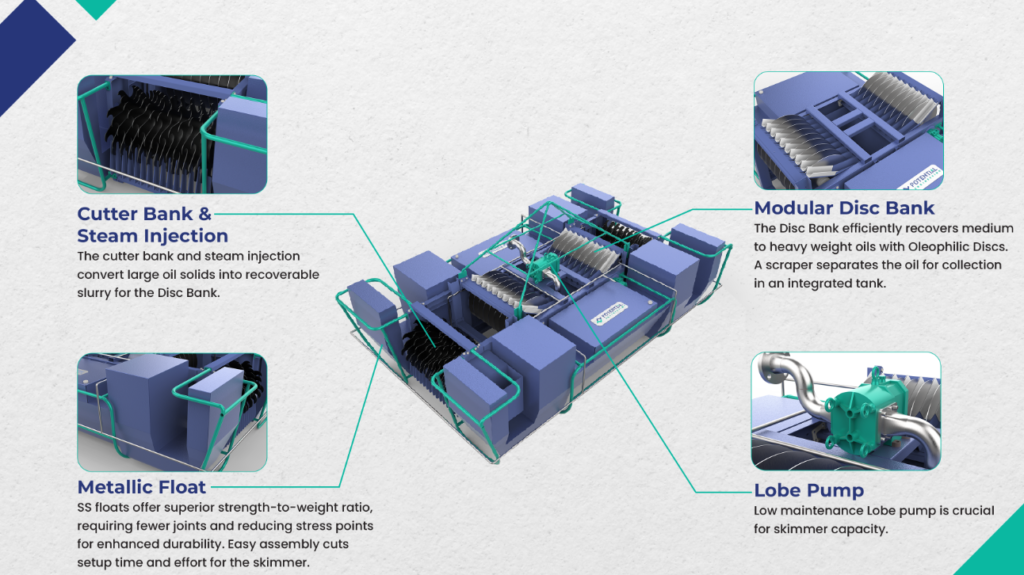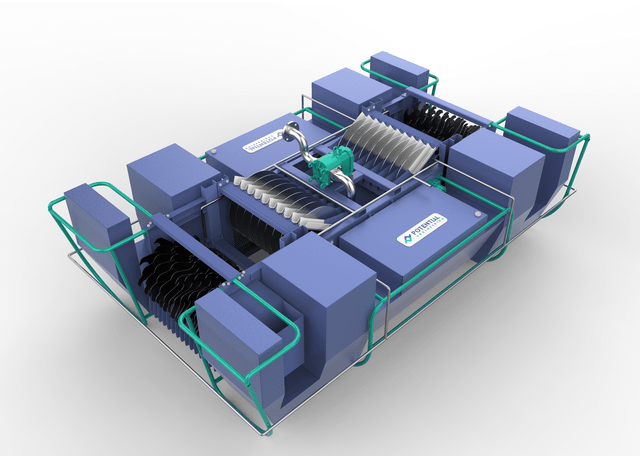FLOATING DISC SKIMMER WITH CUTTER BANK Overview
Thickset Floating Sludge
The formation of a heavy and thick floating sludge layer is a common issue in gas and oil refineries. This layer consists of a mixture of various compounds including hydrocarbons, sediment, water, and other impurities. The weathering and solidification of the oil mixture over time can indeed make excavation a costly and challenging task, particularly in cases where the volumes are substantial. This is an issue that requires innovative solutions to minimize environmental impact and reduce costs associated with site remediation. Finding more efficient and cost-effective methods for addressing these idle sites is crucial for both the industry and the environment.
One of our longstanding clients approached us with a persistent challenge, seeking our expertise to devise a solution. This issue prompted our team to embark on a dedicated endeavor to develop an innovative response.

FLOATING DISC SKIMMER WITH CUTTER BANK Specifications
A Cutter Bank is fundamentally a mechanical system, which means it utilizes physical mechanisms to achieve its purpose. In this case, the objective is to break down large oil solids into smaller, more manageable particles. The primary cutting mechanism often involves the use of blades. These blades are strategically positioned and designed to effectively cut through the material. The geometry and material composition of the blades are selected based on factors such as the type of material being processed and the required particle size.Industries like oil and gas often operate in environments characterized by extreme conditions, including high temperatures, abrasive materials, and corrosive substances. This involves selecting materials with high wear resistance, corrosion resistance, and temperature tolerance. Additionally, specialized coatings or treatments may be applied to enhance the durability and longevity of the blades.
Cutter Bank System
Steam injection is a specialized EOR technique in which high-pressure steam is injected into an oil reservoir. This process is also known as "thermal EOR" because it uses heat to improve the flow of oil within the reservoir. When steam is injected into the reservoir, it imparts both heat and pressure to the surrounding rock formations. This heat serves to reduce the viscosity (thickness or resistance to flow) of the oil. Oil reservoirs often contain heavy, viscous oil that may not flow readily under normal conditions. By reducing the viscosity, the oil becomes more mobile and easier to extract. As the steam heats the reservoir, it interacts with the oil. This interaction transforms the thick, viscous oil into a more fluid state. The mixture that results from this process is often referred to as a "recoverable slurry". It's a combination of oil and water in a form that can be more easily extracted from the reservoir.
Steam Injection System


